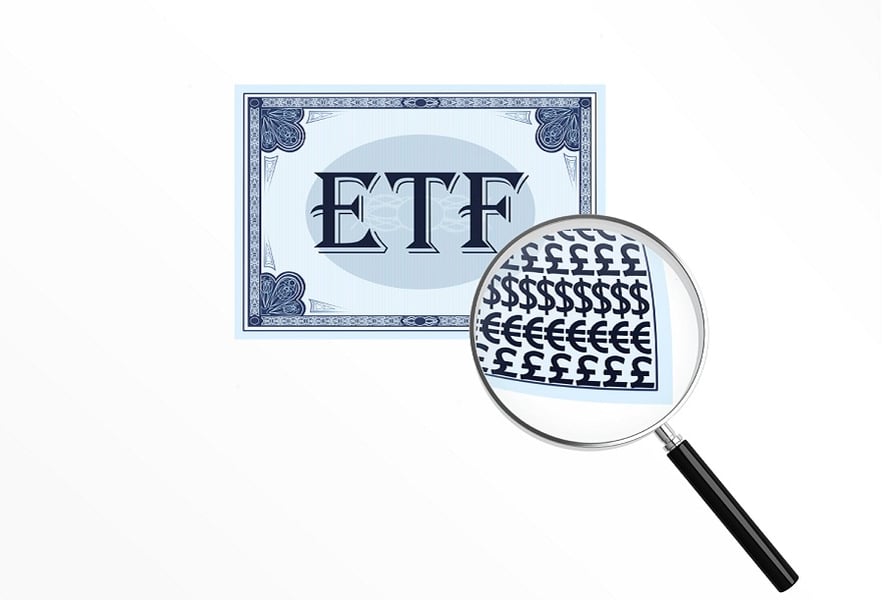

Launched with much fanfare almost three years ago, semitransparent exchange-traded funds have quietly faded into woodwork of the expansive asset management industry. But in the ever-evolving world of ETFs, the story doesn’t end there.
There are about 50 actively managed ETFs that combine for less than $4 billion in total assets operating under an SEC-approved wrapper that allows the funds to limit the disclosure of portfolio holdings, and the trend is now moving toward full transparency.
A Wednesday announcement by Fidelity Investments that it is converting six actively managed mutual funds into fully transparent ETFs is just the latest sign of things to come.
“There’s just something strong about being transparent and there’s something that seems weak about being nontransparent,” said Eric Balchunas, fund analyst at Bloomberg Intelligence.
Not only has Balchunas been persistently bearish on the semitransparent ETF model, but he's very bullish on mutual fund conversions as a way of hitting the deck running in the transparent ETF space.
“When you convert, you get to come over to the ETF market with dignity and there’s a little bit of a halo over you,” he said. “Conversions for legacy active management make a lot of sense because they come over with assets and a track record and mostly they don’t have to lower their management fee. It’s like a win, win, win.”
Meanwhile, Balchunas describes the semitransparent ETF model as a “solution in search of a problem.”
Nate Geraci, president of The ETF Store, agrees that the “longer-term viability of the nontransparent ETF wrapper is highly questionable.”
“While the structure itself functions just fine, organic investor demand simply isn’t there,” Geraci said. “It’s not clear that this wrapper alleviates any real pain point for investors. If there were strong evidence that cloaking holdings could lead to outperformance, then the story might be different. But that evidence simply doesn’t exist at this point.”
While analysts, advisers and investors can draw clear distinctions between transparent and semitransparent ETF models, the fund industry continues to navigate from its own perspective.
At Fidelity, for example, the newly converted transparent ETFs will join nine semitransparent ETFs that have attracted just $270 million in more than two years.
“Right now, we’re committed to both models, and we think there’s value in both,” said Greg Friedman, Fidelity’s head of ETF management and strategy.
While he admitted that the growth of the semitransparent ETFs has been “a little slow,” Friedman pointed out that regulatory approval for a semitransparent model limits the underlying holdings to mostly larger-cap domestic equities.
“We’re working with the SEC to get them more comfortable with non-U.S. equities,” he added.
T. Rowe Price, which didn’t even have an ETF until its launch of five semitransparent equity ETFs two years ago, is also clinging to the model while adding five fully transparent fixed-income ETFs.
“We are seeing appeal both from existing clients and it has opened the door to engage with new clients,” said Tim Coyne, head of ETFs at the asset management firm. “We’re in the early days in our journey of developing a comprehensive product suite.”
But optimism will likely not be enough to head off the market forces that are moving away from the semitransparent model.
“The reality is, they haven’t really taken off and that’s because of a lack of demand from the end investor,” said Michael O’Riordan, founding partner at Blackwater Search & Advisory.
It took the mutual fund industry the better part of a decade to convince the Securities and Exchange Commission to let it limit daily portfolio disclosures in an ETF wrapper. But as O’Riordan sees it, the semitransparent ETF was just the mutual fund industry trying to have it both ways and overlooking what investors wanted.
“ETFs were originally passive, fully transparent and cheap; that’s the DNA of the ETF,” he said. “But a lot of flows were leaving mutual funds and going into ETFs, so the semitransparent ETF was a way for mutual fund managers to get a part of the ETF business, but mutual funds did not want to disclose their trades.”
Another factor that didn’t help the semitransparent cause was the cavalier nature of Ark Investment Management founder Cathie Wood, who showed it was possible to be fully transparent in the active ETF space.
“Cathie Wood is the poster child of fully transparent,” O’Riordan said. “She said if you want to front-run us, go have at it. Now firms are realizing it’s clear they have to be transparent.”
Todd Rosenbluth, head of research at VettaFi, isn’t quite ready to shut the door on semitransparent ETFs because he’s a glass-half-full kind of guy. But he does acknowledge the challenges.
“A handful of asset managers, such as Fidelity, Nuveen and T. Rowe Price, have used the ability to keep stock picks proprietary for a period of time as a way to enter the ETF market,” Rosenbluth said. “At the same time, many others, like Capital Group, Goldman Sachs, Harbor, JPMorgan, Matthews Asia and Neuberger Berman had gained comfort in revealing the full portfolio. I would not call it a bust. For advisers that like working with Fidelity or T. Rowe Price ,they have an ETF alternative to offer clients.”

Executives from LPL Financial, Cresset Partners hired for key roles.

Geopolitical tension has been managed well by the markets.

December cut is still a possiblity.

Canada, China among nations to react to president-elect's comments.

For several years, Leech allegedly favored some clients in trade allocations, at the cost of others, amounting to $600 million, according to the Department of Justice.
Streamline your outreach with Aidentified's AI-driven solutions
This season’s market volatility: Positioning for rate relief, income growth and the AI rebound
